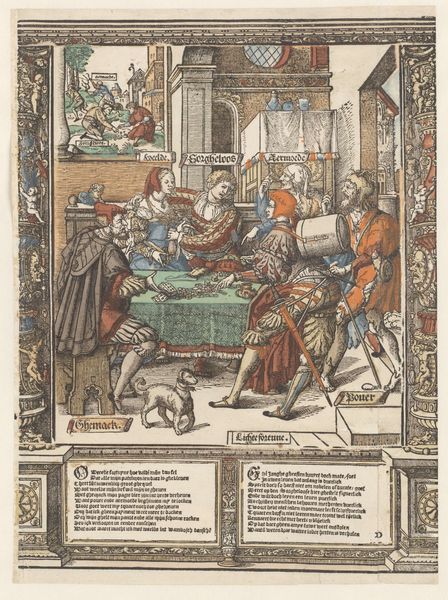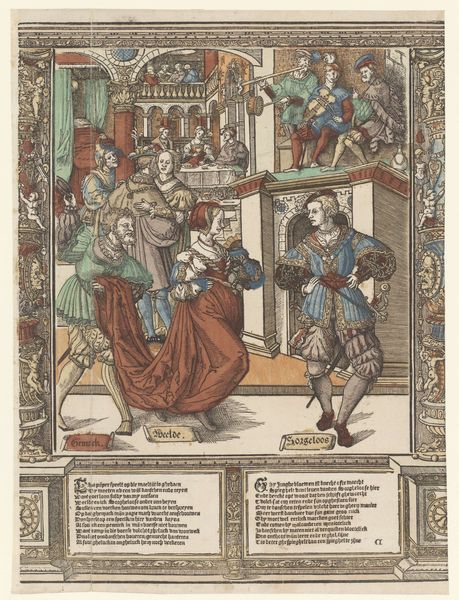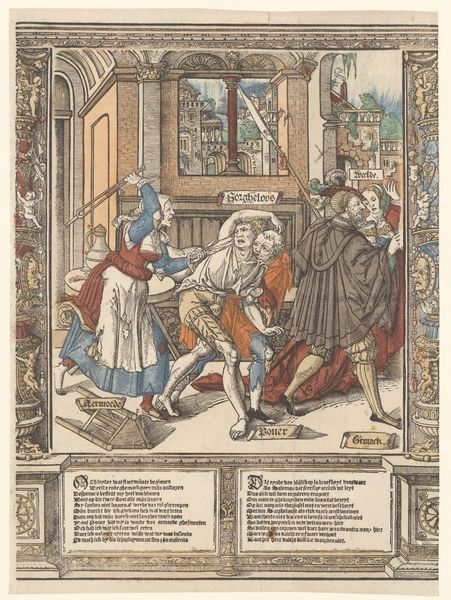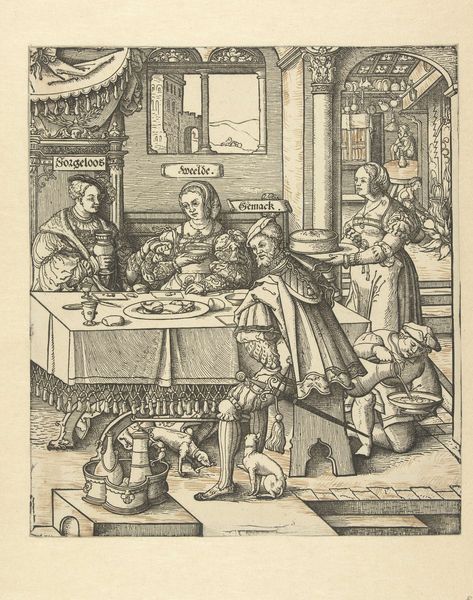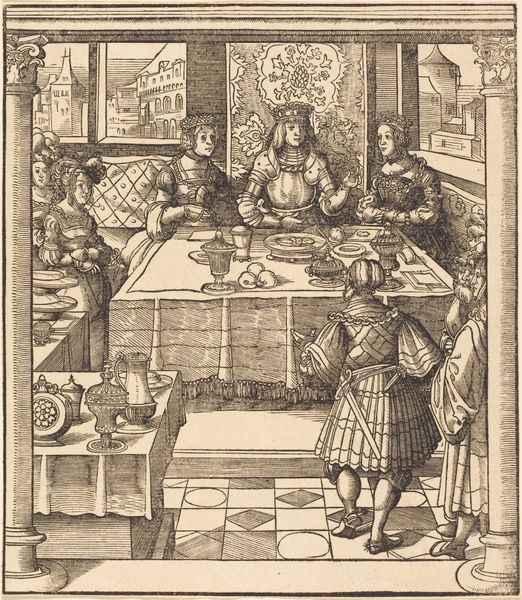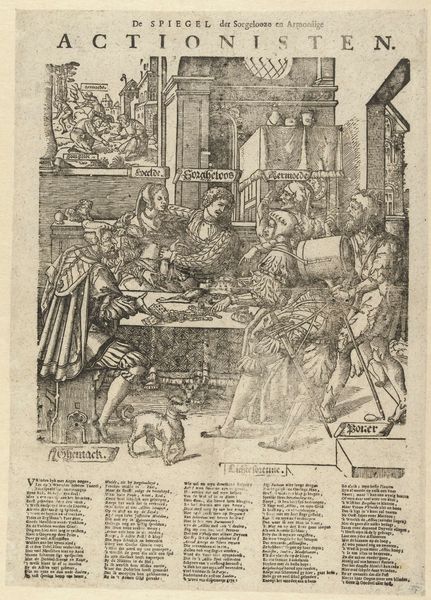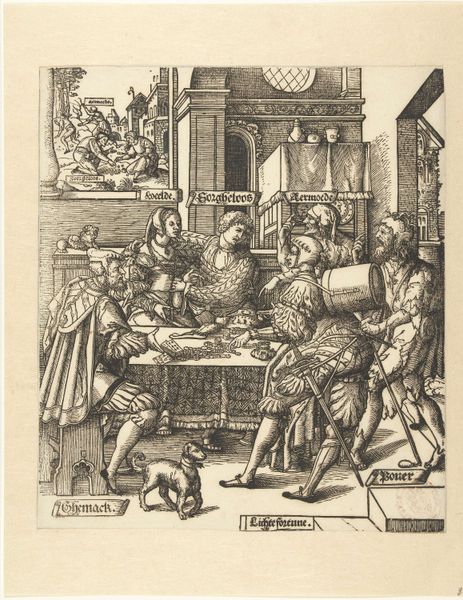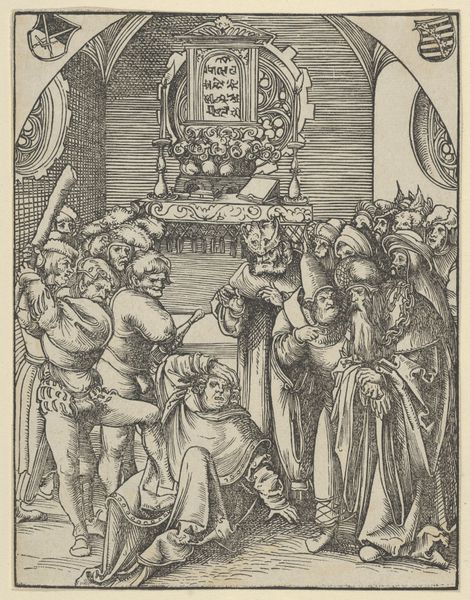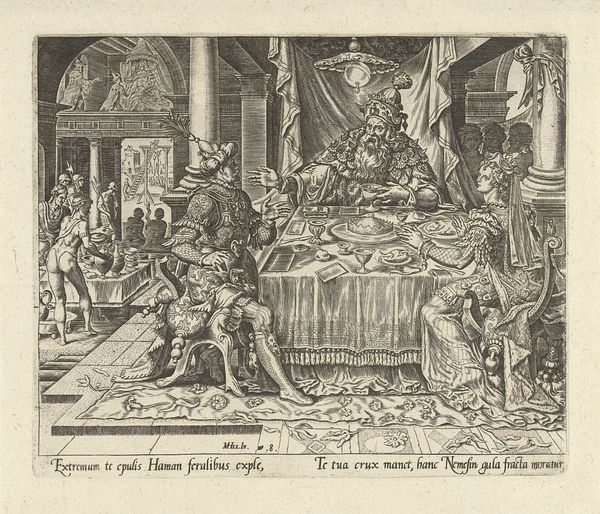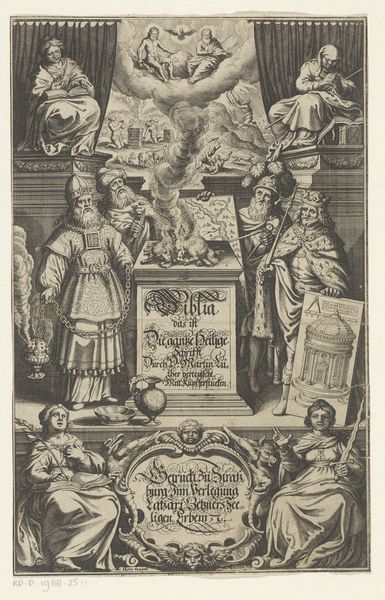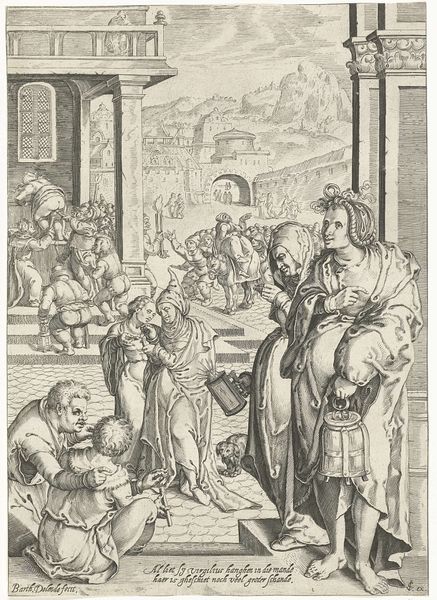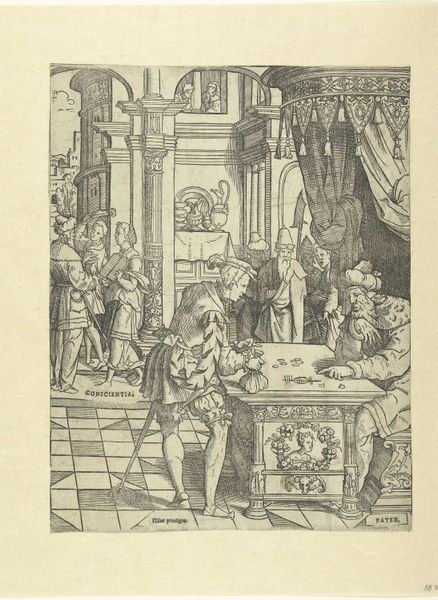
print, engraving
#
narrative-art
# print
#
perspective
#
figuration
#
line
#
genre-painting
#
history-painting
#
northern-renaissance
#
engraving
Dimensions: height 393 mm, width 290 mm
Copyright: Rijks Museum: Open Domain
Curator: This print, entitled "The Meal" ("De maaltijd"), was created in 1541 by Cornelis Anthonisz. It’s an engraving, showcasing a Northern Renaissance style. Editor: My immediate impression is that of a stage set—a deliberately constructed scene frozen in time. The use of line creates depth, but there’s a flatness that's very striking. Curator: Precisely! Anthonisz. uses perspective in a very deliberate manner, organizing the composition. The figures, labeled with names like "Soorgeloos," "Wreelde," and "Ghemack," are placed within a domestic setting, engaged in eating and serving. What story do you think is being told? Editor: The interplay between order and the implicit narratives embedded in such genre painting. There is the formal order of the table versus the human dramas likely unfolding at that dining table in the Dutch Golden Age. There's an interplay of the immediate domestic drama playing out for wealthy citizens within larger geopolitical turbulence. Curator: Consider also the text inscribed at the bottom of the print. Text functions as labels, too, so it serves to give context, framing the meal in a specific light, maybe pointing towards morality or satire. Editor: Exactly! Look at how the line, as a structural component, divides the scene into distinct visual segments: the immediate action at the table, then framed view through the window and background action in other rooms. Then even beyond the frame the scene spills into even more tiny framed illustrative allegories along the top and sides of the border! Anthonisz. truly maximizes visual density. Curator: That visual density certainly invites closer examination. And when considering the artistic license used to express perspective along with details of wealth, like wine, fabric, servants... One starts thinking of Dutch society during that specific period. Editor: For me, the print offers not just a window into history but also reflects the Renaissance ideals of observing, classifying, and creating order from observation. Its lines construct not just scenes but whole societal systems and worldviews. Curator: Indeed. A rather intricate composition by Anthonisz., prompting us to analyze the layers embedded within. Editor: And from such detailed linear complexity, what a richness and story it tells.
Comments
No comments
Be the first to comment and join the conversation on the ultimate creative platform.
